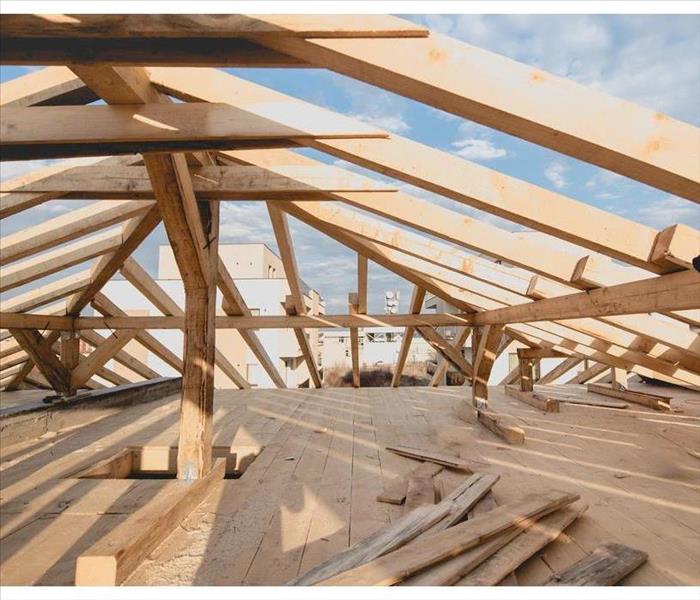How To Use Building Envelopes To Keep Your Property Dry
12/18/2019 (Permalink)
 When building or remodeling the envelope for your property, you should take certain additional steps to keep the area secure
When building or remodeling the envelope for your property, you should take certain additional steps to keep the area secure
How To Use Building Envelopes To Keep Your Property Dry
Rain damage can harm a Unity Village, MO, commercial building in several ways. It creates an overflow of water, which may necessitate expensive flood cleanup. The water can destroy both the structure of a building and the contents inside it. Rain damage can also lead to a buildup of toxic black mold.
Thankfully, there are ways to prevent major storm damage to your property. One common tactic is securing the building envelope. This envelope consists of the wall systems and the roof, and it has several functions. They include:
- Resisting the escape of cool or hot air
- Diverting water to the storm drains
- Protecting and supporting equipment
- Defending the building from snow or rain
Securing the Envelope
Water penetration is responsible for the majority of harm to buildings. Flood damage, in particular, can be costly. Worst of all, water does not need a lot of space to get inside a property. A hole as small as 0.005 inches is all it takes.
This hole can result from cracks in the plaster and brick that make up the walls. Poorly installed joints can cause gaps, as well. To limit the rain damage to your property, be sure to seal as many of these openings as possible.
Designing the Envelope
When building or remodeling the envelope for your property, you should take certain additional steps to keep the area secure. If possible, limit the number of protrusions you use. You should also avoid using too many different cladding materials. You may want to include rain screens and capillary breaks, as well.
There are backup systems you can install, too. You can utilize weep holes that drain excess water to the outside of the building. You can also use through-wall flashing to divert moisture to the exterior.
Proper maintenance of your commercial building envelope can prevent rain damage. However, if your property does sustain a leak, storm cleanup specialists can assist with the restoration process.





 24/7 Emergency Service
24/7 Emergency Service